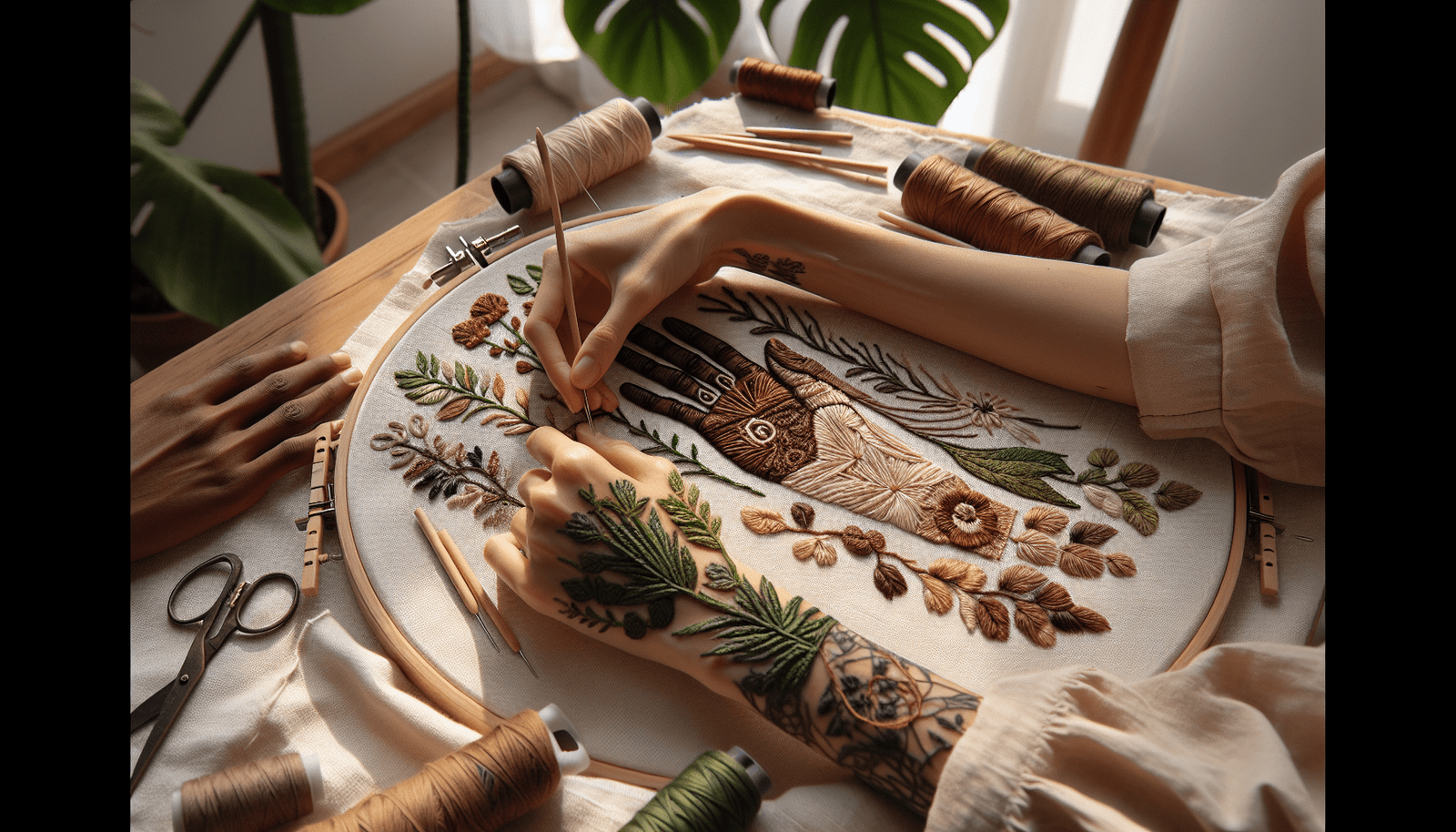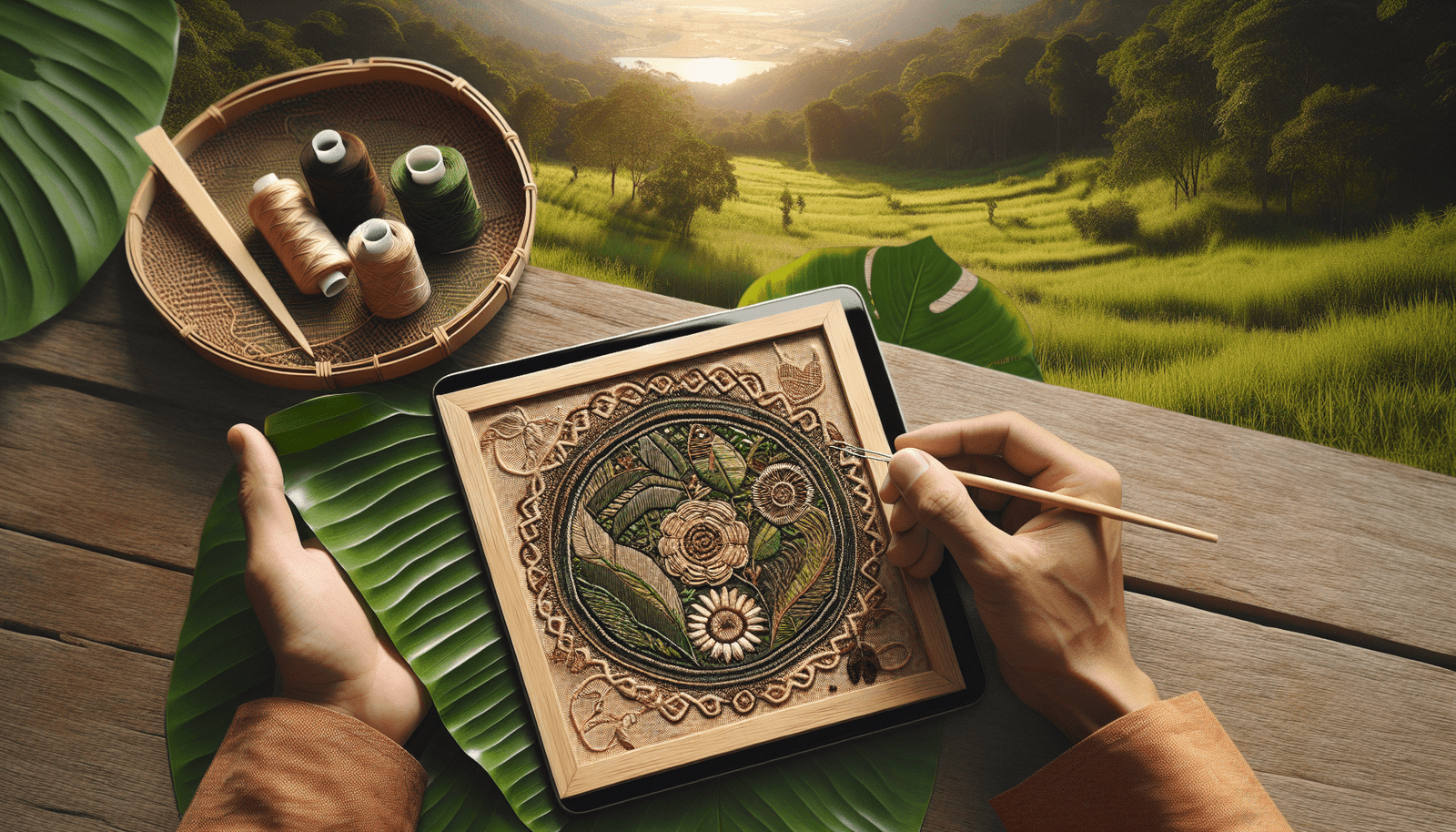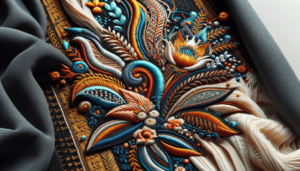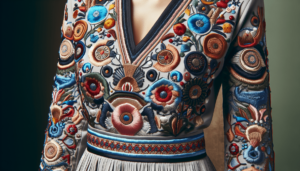Eco-Friendly Embroidery: How Sustainable Practices Are Changing The Industry
Ever thought about how your hobbies could have an impact on the planet? If you’re into embroidery, you might be surprised to learn that even this intricate, creative activity can contribute to environmental issues. But don’t fret; there’s an increasing movement towards more sustainable practices within the embroidery community. Let’s explore how eco-friendly approaches are revolutionizing this age-old craft.

What is Eco-Friendly Embroidery?
Eco-friendly embroidery refers to the utilization of sustainable materials and methods to minimize the environmental footprint during the creation of embroidered artworks. It intertwines the charm of needlework with a commitment to environmental stewardship. This practice aims to preserve the essence of embroidery while fostering a greener planet.
Why Is It Important?
The traditional embroidery industry, much like other forms of textile production, can have significant ecological consequences. From the chemicals used in dyeing threads to the vast amount of waste produced, conventional methods are far from green. Eco-friendly embroidery addresses these concerns by prioritizing sustainability.
Sustainable Materials in Embroidery
One of the easiest ways to make your embroidery more sustainable is by being choosy about your materials. Let’s break down some eco-conscious options that you can integrate into your crafting routine.
Organic Threads
Opting for threads produced from organic cotton, bamboo, or hemp can make your embroidery significantly more sustainable. These fibers are grown without harmful pesticides and chemicals, reducing both soil and water contamination.
Comparison of Conventional vs. Organic Threads
| Aspect | Conventional Threads | Organic Threads |
|---|---|---|
| Pesticides | High pesticide use | No synthetic pesticides |
| Water Usage | High | Moderate |
| Soil Health | Degraded | Maintained or improved |
Recycled Threads
Another excellent option is to use threads made from recycled materials. Companies are now producing embroidery threads from recycled polyester or even repurposed fabric scraps, reducing waste and giving new life to discarded materials.
Sustainable Fabrics
Choosing eco-friendly fabrics like organic cotton, linen, or recycled fabrics can also lower your environmental impact. These materials typically require fewer resources to produce and are often more biodegradable than synthetic options.
Eco-Friendly Embroidery Techniques
Beyond materials, the techniques you employ can also contribute to a greener embroidery practice. Let’s discuss some ways you can make your stitching process more sustainable.
Mindful Thread Usage
It’s easy to let threads go to waste, especially when they tangle or break. By practicing mindful thread usage—such as cutting only the length you need and using up scraps—you can minimize waste and make your projects more efficient.
Correct Disposal
Properly disposing of waste materials, such as broken needles, fabric scraps, and thread clippings, can also make a difference. Some local recycling programs accept textile waste, or you could even use scraps for new projects, like quilted art pieces.
Upcycling and Repair
Instead of creating new works from scratch, consider upcycling old fabrics or repairing worn items. Embellishing an old piece of clothing with embroidery not only saves the item from the landfill but also adds a unique, personal touch.

Impact of Eco-Friendly Embroidery On The Industry
The shift towards sustainable embroidery practices is not only beneficial for individual crafters but also resonates profoundly within the industry. This change is visible in several significant areas.
Influence on Manufacturers
Manufacturers are starting to respond to the growing demand for eco-friendly products. From producing organic threads to developing sustainable packaging, businesses are incorporating greener alternatives to attract conscientious consumers.
Community Awareness
Greater community awareness around sustainable practices fosters a more informed, responsible group of crafters. Social media platforms, hobby forums, and workshops dedicated to eco-friendly embroidery are helping spread these important messages.
Consumer Choices
As consumer awareness increases, so does the demand for sustainable products. More people are seeking out eco-friendly kits, instructional books, and tools, shaping the market towards more sustainable offerings.
Challenges and Solutions in Eco-Friendly Embroidery
While transitioning to sustainable practices is beneficial, it doesn’t come without its challenges. Let’s look at some common obstacles and their solutions.
Higher Costs
One of the primary challenges in eco-friendly embroidery is the higher cost of sustainable materials. Organic threads or fabrics can be pricier compared to their conventional counterparts.
Solution: Cost-Efficient Alternatives
Bulk purchasing or participating in group buys can often lower the cost. Additionally, looking for sales or leftover scraps from local textile shops can be a budget-friendly way to gather materials.
Limited Availability
Sometimes the materials you need aren’t widely available, making it difficult to stay committed to eco-friendly practices.
Solution: Online Resources
Many online stores specialize in sustainable crafting supplies. By broadening your search to include these specialty suppliers, you can often find what you need without compromising your eco-friendly goals.
Skill Level
Eco-friendly techniques sometimes require advanced skills or more intricate processes that may be daunting for beginners.
Solution: Educational Resources
There’s a growing number of tutorials, online classes, and workshops aimed at teaching sustainable embroidery techniques. Engaging with these resources can help bridge the skill gap and make eco-friendly embroidery more accessible.
Benefits of Embracing Eco-Friendly Embroidery
Adopting sustainable practices in your embroidery not only benefits the planet but also enhances your crafting experience in several ways.
Enhancing Creativity
Working within the constraints of available eco-friendly materials can actually boost your creativity. You might find yourself experimenting with new fabrics or unconventional reclaimed items, leading to unique and innovative designs.
Reducing Waste
Eco-friendly embroidery naturally leads to reduced waste. Mindful thread usage and upcycling help to minimize the leftovers that might otherwise contribute to landfills.
Building Community
By joining the eco-friendly embroidery movement, you connect with a community of like-minded crafters. Sharing tips, resources, and inspiration with others can be incredibly fulfilling and supportive.
Contribution to Sustainability
Every effort, no matter how small, contributes to larger sustainability goals. Your choice to practice eco-friendly embroidery can pave the way for broader changes in the industry.
How To Get Started
Feeling inspired to make your embroidery practice more eco-friendly? Here are some actionable steps to help you get started.
Assess Your Current Practices
Begin by taking a detailed look at your current embroidery methods. Identify areas where you’re already doing well and others that could use improvement.
Start Small
You don’t need to make all the changes at once. Start by switching to organic threads or choosing a sustainable fabric for your next project. Gradually, integrate more eco-friendly practices as you become more comfortable.
Educate Yourself
Knowledge is power. Spend time reading up on sustainable practices in the textile industry, follow eco-conscious embroidery blogs, or join social media groups dedicated to green crafting.
Shop Consciously
Look for brands and stores that prioritize sustainability. Supporting businesses that are conscious of their environmental impact helps drive industry-wide change.
Share Your Journey
Don’t keep your progress to yourself! Share your experiences, both the triumphs and the challenges, with your community. This can help inspire others to take steps towards more sustainable crafting.
Future of Eco-Friendly Embroidery
The future looks promising for eco-friendly embroidery. As awareness spreads and technology advances, the industry is likely to see significant changes.
Technological Innovations
Emerging technologies in textile production, such as bio-fabrication and advanced recycling methods, promise to make sustainable materials more accessible and affordable.
Growing Consumer Demand
Consumer demand for sustainably made products is at an all-time high and is predicted to rise even further. This demand will likely lead to more innovation and development in sustainable embroidery supplies.
Policy and Regulation
With increasing concern about the environmental impact of textile industries, governmental policies are likely to enforce greener practices. These regulations could make sustainable materials the norm rather than the exception.
Closing Thoughts
Eco-friendly embroidery is more than a trend; it’s a movement towards a more sustainable and conscientious way of crafting. By making small, meaningful changes in your practices, you support a larger effort to preserve the environment while still enjoying the beauty and satisfaction of embroidery. Engage with the community, educate yourself, and take pride in the unique, eco-friendly pieces you create.



